The Timeless Elegance of Wishbone Chair Craftsmanship in Modern Interiors
In the realm of modern interiors, the Wishbone Chair stands as a paragon of timeless elegance and exquisite craftsmanship. Designed by Hans J. Wegner in 1949, this iconic piece not only enhances the aesthetic appeal of contemporary spaces but also embodies a rich legacy of functional artistry. Renowned designer and furniture historian, Dr. John McLeod, once stated,
"The Wishbone Chair is more than just a seat; it is a philosophy of design that marries beauty with purpose, making it a vital component of any sophisticated interior."
As homeowners and designers alike seek to create environments that are both stylish and inviting, the Wishbone Chair remains a cherished choice. Its unique Y-shaped back and elegantly woven seat are testaments to the skill and dedication of craftsmen who have perfected this piece over generations. This chair has transcended fleeting trends, firmly establishing itself in the lexicon of modern design as an enduring symbol of quality and comfort.
Today, as we explore the intersection of tradition and contemporary living, the Wishbone Chair continues to inspire creativity and innovation, proving that great design is never out of fashion. Its presence in the modern interior serves as a reminder that the interplay of artistry and functionality can create spaces that are not only beautiful but also profoundly meaningful.

Exploring the Iconic Design of the Wishbone Chair
The Wishbone Chair, designed by Hans J. Wegner in 1949, exemplifies the perfect blend of form and function, making it a timeless piece in modern interiors. Its iconic design features a distinctive Y-shaped backrest, which not only provides solid support but also encourages a relaxed seating posture. The chair's combination of wood and a hand-woven paper cord seat enhances its organic aesthetic, allowing it to effortlessly blend into various interior styles, from minimalist to Scandinavian.
Craftsmanship is at the heart of the Wishbone Chair’s enduring appeal. Each piece is meticulously constructed by skilled artisans, often taking hours to complete the intricate weaving process. This dedication to quality and detail not only highlights the craftsmanship involved but also ensures that every chair is unique. The natural materials used in its construction further contribute to its ability to age gracefully, making it a sustainable choice for contemporary living spaces. As modern designers continue to recognize its beauty and functionality, the Wishbone Chair remains a celebrated icon, embodying a legacy of elegance that resonates in today's design landscape.
Craftsmanship Techniques: Handcrafted Quality Meets Modern Aesthetics
The Wishbone chair, designed by Hans J. Wegner, exemplifies timeless elegance in modern interiors, thanks to its meticulous craftsmanship techniques. Each chair is handcrafted using a complex process that requires both skill and precision. For instance, the steam-bent backrest alone involves around 14 different stages of production, ensuring that every curve is not only aesthetically pleasing but also structurally sound. According to a report by the International Society of Furniture Designers, handcrafted furniture, such as the Wishbone chair, has seen a resurgence, with demand growing by 12% annually as consumers appreciate the value of artisanal quality in an era dominated by mass production.
Moreover, the integration of modern aesthetics in the design of the Wishbone chair allows it to harmonize effortlessly with various interior styles, from minimalist to eclectic. The use of natural materials—combined with a focus on sustainability—makes it particularly appealing. A study published by the Sustainable Furnishings Council indicated that 67% of consumers prefer to invest in furniture pieces that reflect both environmental consciousness and superior craftsmanship. This increasing awareness contributes to the chair’s enduring appeal, making it not just a piece of furniture, but a statement of quality and style in contemporary living spaces.
Integrating Wishbone Chairs into Contemporary Décor Styles
Integrating Wishbone chairs into contemporary décor styles not only adds a touch of historical elegance but also enhances the overall aesthetic of the space. These iconic pieces, designed by Hans J. Wegner, beautifully blend organic shapes and natural materials, making them versatile for various interior design themes. Whether placed at the dining table or as accent pieces in a living room, Wishbone chairs can elevate minimalist, Scandinavian, or even eclectic interiors.
Tip: When incorporating Wishbone chairs into your decor, consider using a color palette that complements the natural wood finish. Soft, muted tones in your textiles and wall colors can create a harmonious environment that showcases the chair’s craftsmanship.
Moreover, combining Wishbone chairs with modern furniture—such as sleek glass tables or metal accents—can create an eye-catching contrast. This combination allows the classic design of the chair to stand out while maintaining a fresh, updated look.
Tip: To enhance comfort without compromising style, add subtle cushions in bold patterns or textures to your Wishbone chairs. This not only invites guests to sit and enjoy, but also introduces a modern flair into the timeless design.
The Timeless Elegance of Wishbone Chair Craftsmanship in Modern Interiors
| Style | Material | Color Palette | Complementary Elements | Usage Context |
|---|---|---|---|---|
| Scandinavian | Wood | Natural tones, White | Soft textiles, Minimalist décor | Dining Rooms, Living Areas |
| Modern Minimalism | Metal, Plastic | Monochrome, Bold Colors | Geometric Shapes, Glass accents | Offices, Contemporary Homes |
| Bohemian | Wicker, Mixed Materials | Vibrant colors, Earthy tones | Layered textiles, Art pieces | Lounges, Creative Spaces |
| Industrial | Reclaimed Wood, Steel | Neutral tones, Rusty accents | Exposed bricks, Vintage décor | Restaurants, Workshops |
| Classic Elegance | Wood, Upholstered finishes | Rich tones, Golds, Silvers | Antique furniture, Art | Formal Dining Rooms, Grand Living Spaces |
Versatility of the Wishbone Chair in Various Interior Spaces
The Wishbone Chair, designed by Hans J. Wegner in the 1950s, continues to captivate modern interiors with its blend of functionality and aesthetic appeal. Its signature Y-shaped backrest and elegantly woven seat make it a versatile choice for various interior spaces, seamlessly complementing both contemporary and traditional designs. Whether placed in a minimalist dining room or a cozy reading nook, the Wishbone Chair embodies timeless elegance that enhances the overall decor.
In dining settings, the Wishbone Chair adds a touch of sophistication while remaining practical. Its light silhouette allows for easy movement, making it ideal for both small and large gatherings. In contrast, in more eclectic interiors, the chair acts as a striking focal point, harmonizing with a range of textures and colors. Furthermore, its adaptability extends beyond dining tables; it can effortlessly transition to workspaces or living rooms, providing comfort and style. The Wishbone Chair’s seamless integration into various design narratives showcases its enduring appeal and versatility in modern interiors.
Sustainability and Timelessness: Why the Wishbone Chair Endures
The Wishbone Chair, designed by Hans J. Wegner in 1949, stands as a paragon of sustainability and timelessness in modern interior design. Its enduring appeal can be attributed to the high-quality materials and craftsmanship that go into its production. According to a 2022 report by the Furniture Sustainability Council, approximately 70% of consumers now prioritize eco-friendly furniture choices, highlighting a significant shift toward sustainable purchasing behavior. The Wishbone Chair, made from sustainably sourced wood and natural fibers, resonates well with this trend, offering both aesthetic value and a lower environmental impact.
Moreover, the longevity of the Wishbone Chair reinforces its status as a timeless classic. Research from the Design Museum indicates that furniture pieces with a lasting design not only increase consumer satisfaction but also reduce the frequency of replacements, thus conserving resources. With a lifespan often exceeding several decades, the Wishbone Chair exemplifies this principle, making it a cost-effective choice for those mindful of both budget and environmental impact. In an age where disposable furniture is prevalent, the Wishbone Chair serves as a reminder of the value of craftsmanship and sustainable design.
Related Posts
-
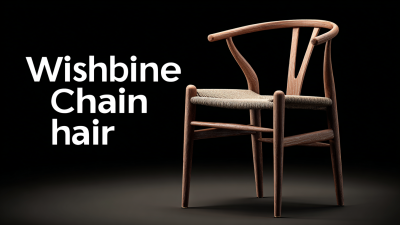
Unveiling the Specifications of the Best Wishbone Chair and How to Choose the Right One for Your Space
-

Exploring the Future of Modular Couches: Trends and Insights for Global Buyers
-
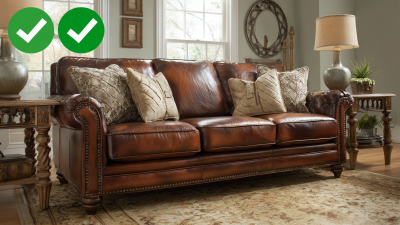
Navigating Import and Export Certifications for the Best Leather Sofa Selling Guide
-
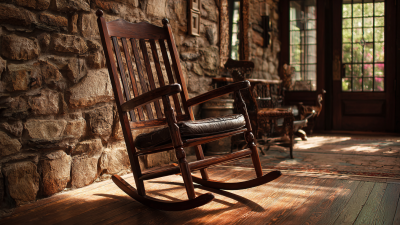
How to Choose the Best Rocking Chair for Your Comfort and Style
-
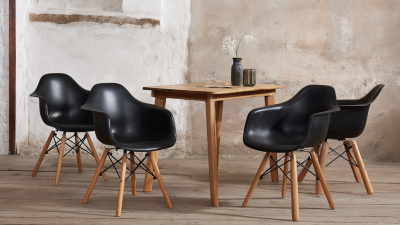
Navigating Import and Export Certifications for Sourcing the Best Black Dining Chairs Globally
-
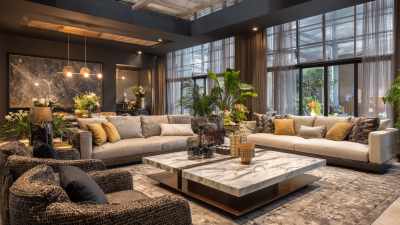
How to Choose the Perfect Coffee Table for Your Living Space

